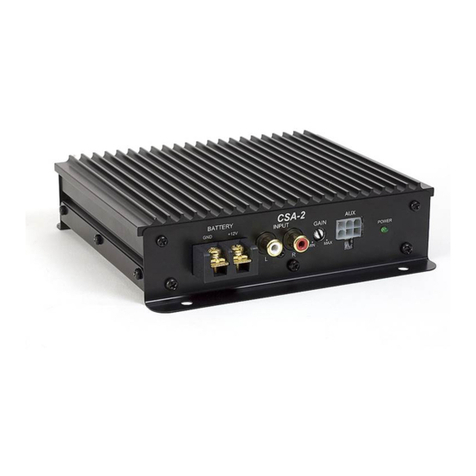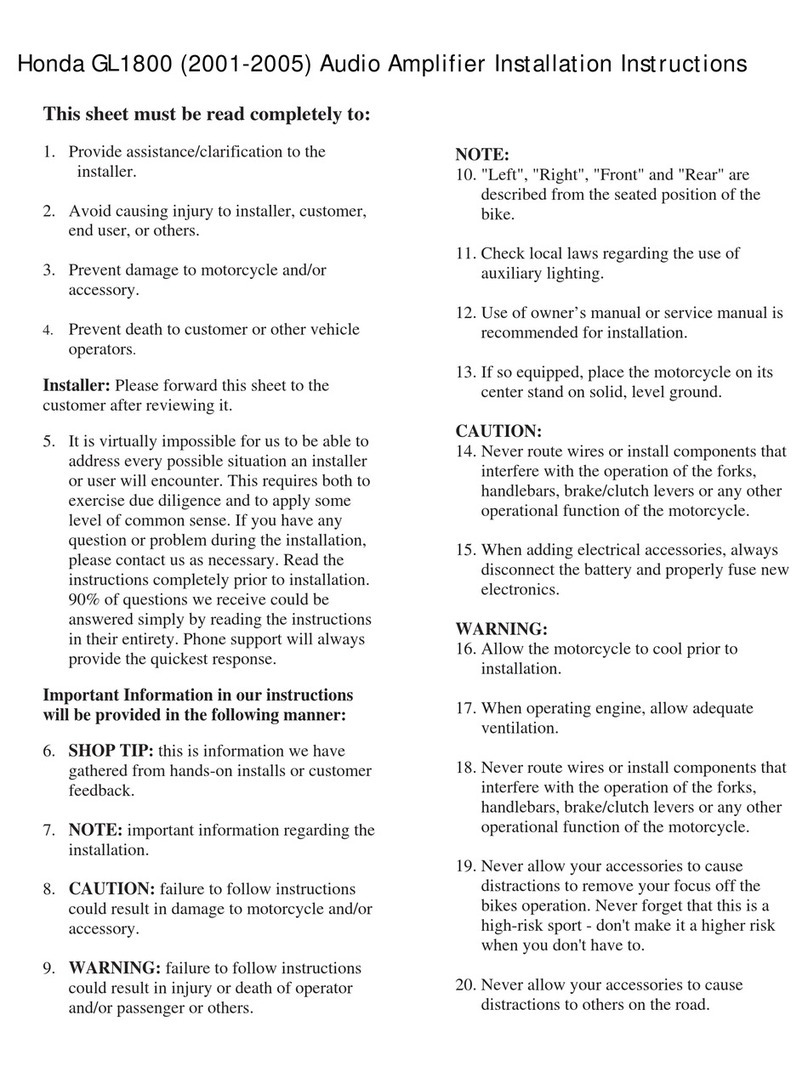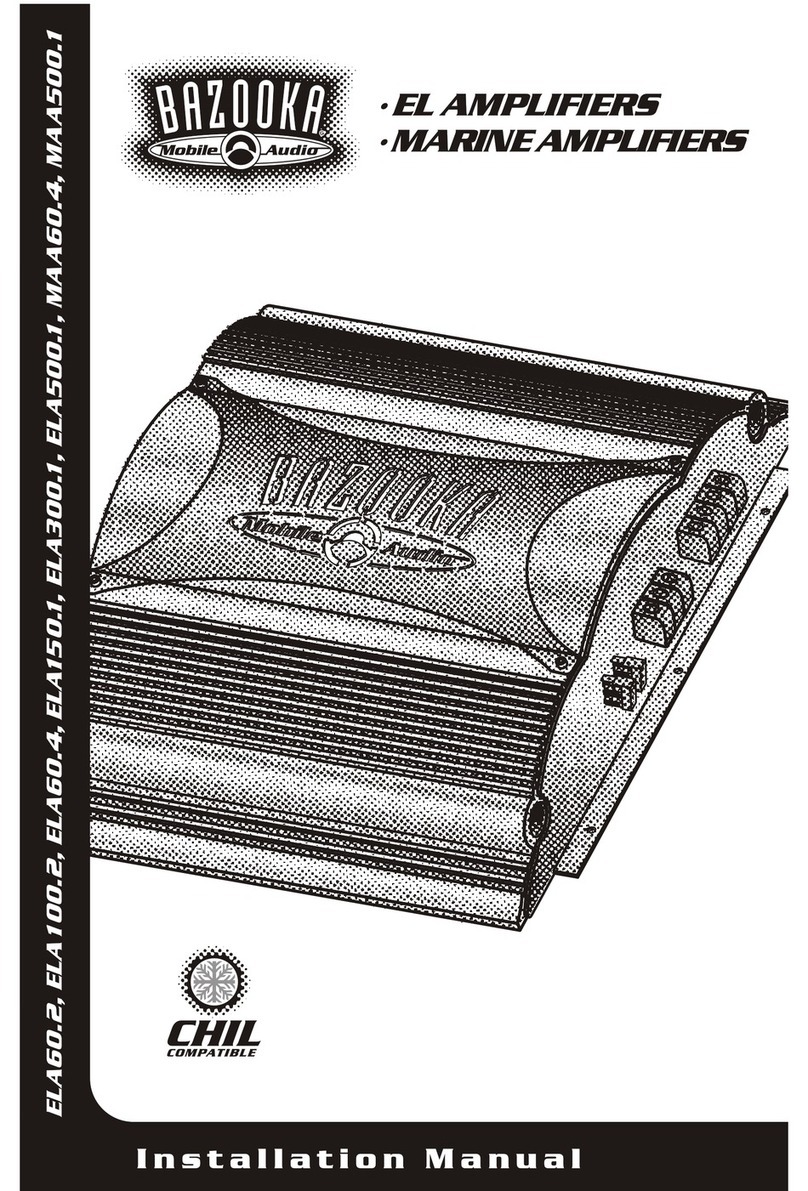
Dear
customer,
Congratulations
on
your purchase
of
a
Bazooka
high-performance amplifier.
Rt
Bazooka,
we are fanatics about accurate music reproduction.
Your
selection
of
our products
for
your
sound
system indicates that quality
sound
is
also
important to
you
too.
Rt
SRS,
we
take great pride
in
manufacturing revolutionary
audio
products,and through the years
of
engineering expertise,
hand
craftsmanship
and
critical
testing procedures, we
have
created this high-performance series
of
amplifiers.
We
hope
that
you
will take
as
much
pride
in
owning
and
using
one
of
these high-quality
audio
products
as
we
do
designing
and
manufacturing them.
When
properly installed
and
operated, your
Bazooka
ELR
amplifier
will
give
you
years
of
clean uninterrupted
sound
reproduction. Therefore,
we
urge
you
to take a
few
minutes to
carefully read through this
manual.
It will explain
all
of the features
of
your amplifier
and
help
insure trouble
free
installation.
Sound
can
be
deceiving.
Over
time your hearing comfort level adapts to higher volumes
of
sound.
What
may
have
sounded
normal
can
actually
be
too
loud
and
harmful to your hearing.
Guard
against this
by
setting your equipment at asafe level before your hearing adapts.
To
establish a
LLsafe
level'''
Start
with
your volume control at alow setting.
Slowly increase the volume control until
you
can
hear comfortably, clearly
and
without distortion.
Once
you
have
established acomfortable
LLsound
level'''
make
anote
of
this
position
and
do
not
go
above
this setting
Taking
aminute to
do
this will
help
prevent your hearing from being
damaged
and
allow
you
to enjoy listening to music throughout your lifetime.
2ELR RMPLIFIERS





































